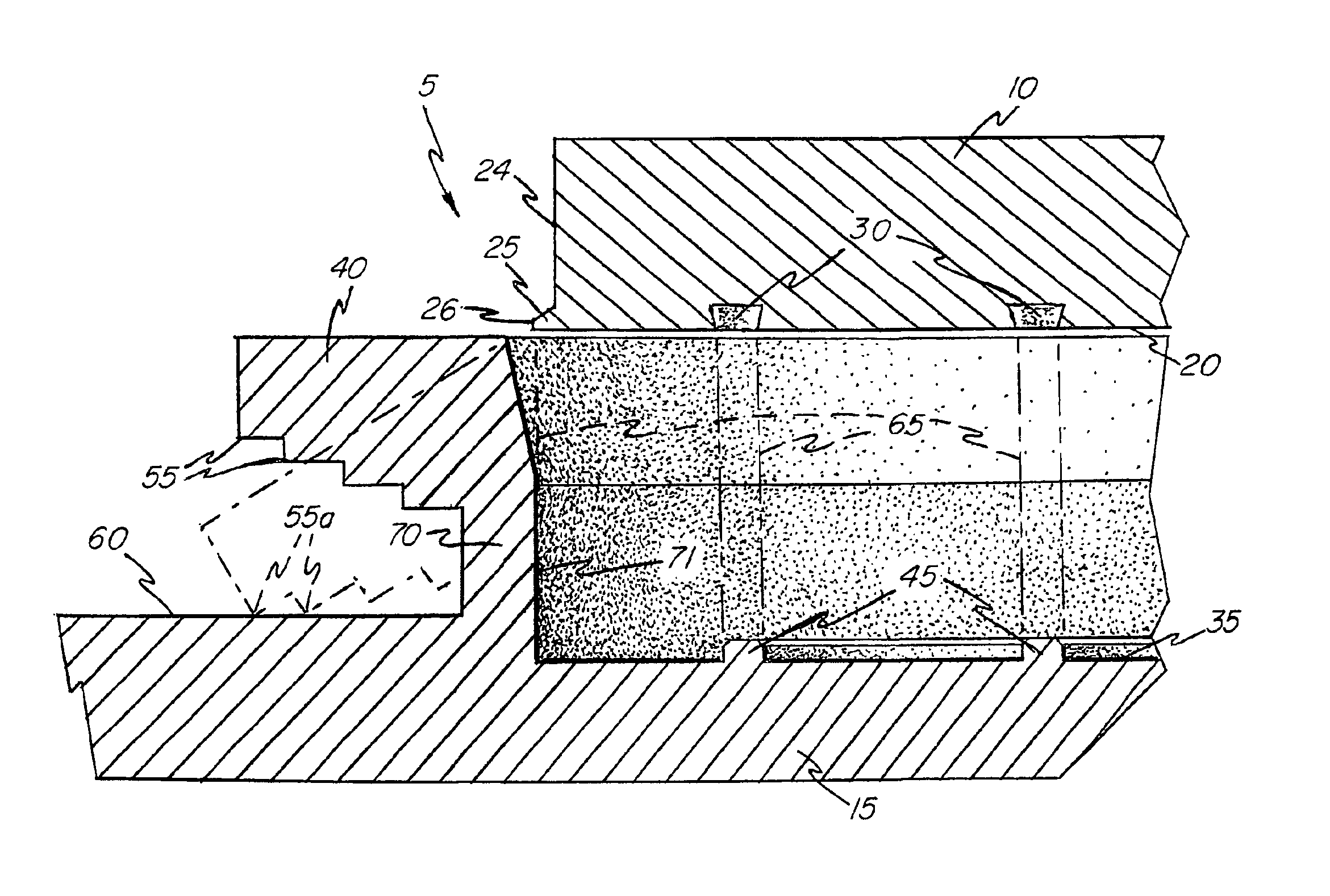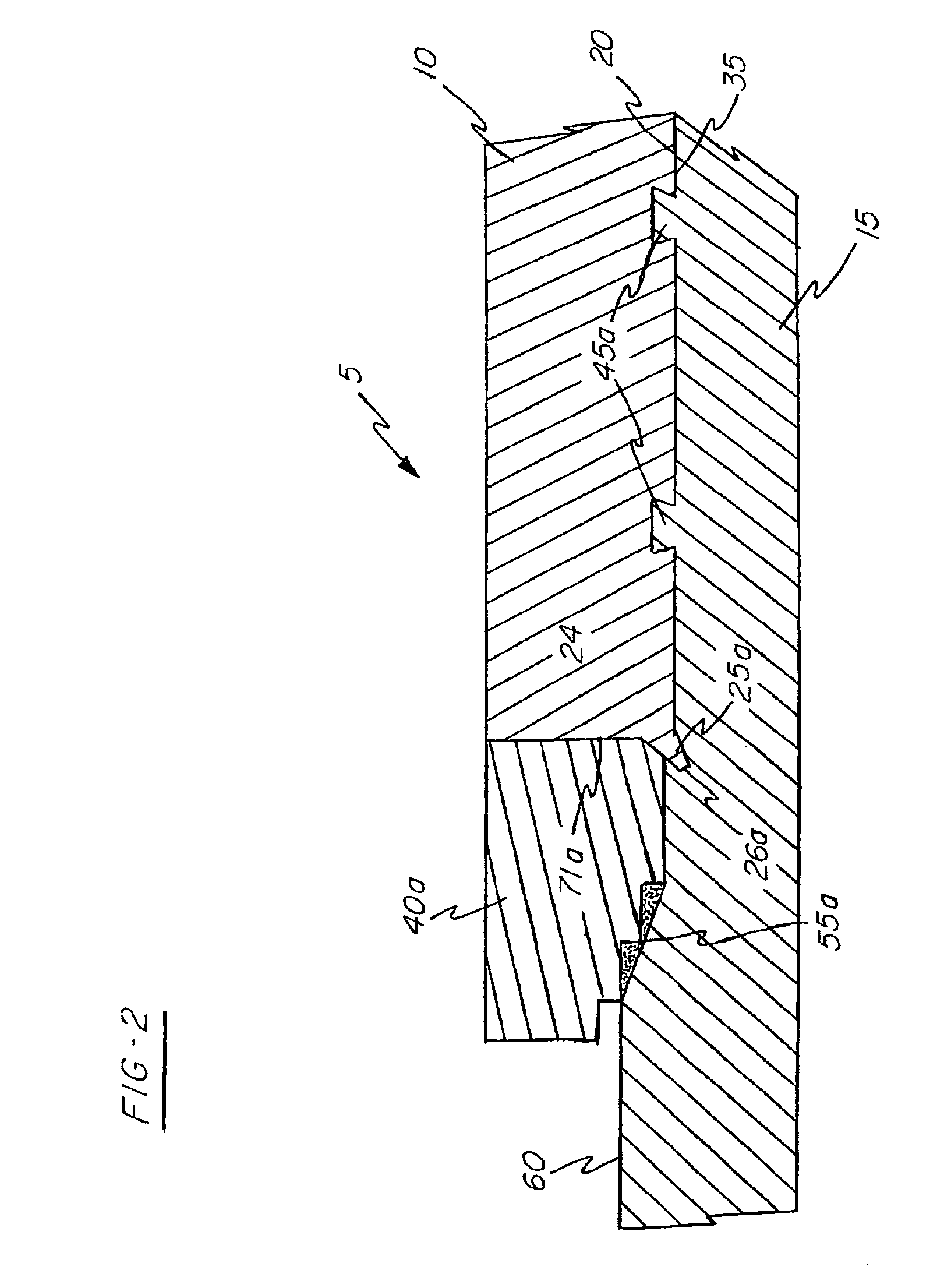Low temperature sputter target/backing plate method and assembly
a low-temperature, backing plate technology, applied in vacuum evaporation coating, non-electric welding apparatus, manufacturing tools, etc., can solve the problems of high sputtering rate, high sputtering rate bowing or bending, leakage, etc., to achieve high sputtering rate without significant bowing or bending, and ensure the effect of separation
- Summary
- Abstract
- Description
- Claims
- Application Information
AI Technical Summary
Benefits of technology
Problems solved by technology
Method used
Image
Examples
Embodiment Construction
[0025]Referring initially to FIG. 1, target assembly 5 in accordance with the present invention is depicted prior to the target material 10 being low temperature pressure consolidated with backing plate material 15. As shown, the target material is first formed to be substantially disc shape and the backing plate material is formed to receive the target material within. Exemplary target materials comprise, Al, Cu, Ti, Co, and their alloys. Exemplary backing plates may comprise Al, stainless steel, Cu, Ti, and their alloys.
[0026]The target material 10 is formed to include a mating surface 20 with tapered grooves 30 and a side portion 24. The target material is further formed to include a lip 25 extending from the side portion 24. The lip 25 is substantially rectangular in cross section with tip 26 defining the outer most edge of the target material in a radial direction.
[0027]The backing plate material 15 is formed to include a mating surface 35 with protruding portions 45 extending ...
PUM
| Property | Measurement | Unit |
|---|---|---|
| temperature | aaaaa | aaaaa |
| temperature | aaaaa | aaaaa |
| temperature | aaaaa | aaaaa |
Abstract
Description
Claims
Application Information
 Login to View More
Login to View More - R&D
- Intellectual Property
- Life Sciences
- Materials
- Tech Scout
- Unparalleled Data Quality
- Higher Quality Content
- 60% Fewer Hallucinations
Browse by: Latest US Patents, China's latest patents, Technical Efficacy Thesaurus, Application Domain, Technology Topic, Popular Technical Reports.
© 2025 PatSnap. All rights reserved.Legal|Privacy policy|Modern Slavery Act Transparency Statement|Sitemap|About US| Contact US: help@patsnap.com



